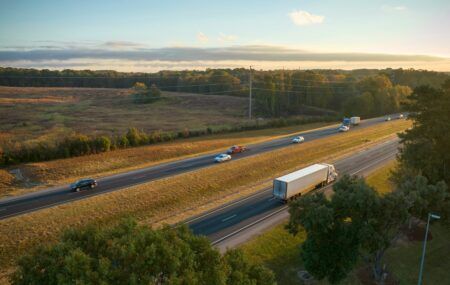US Transportation Secretary Anthony Foxx has released the final Beyond Traffic 2045 report, highlighting transportation challenges the USA will face over the next three decades, and has also designated 18 Innovation Centers across the country to lead research on the challenges outlined in the report.
The report finds that the USA’s transportation system, and the current planning and funding mechanisms, will not meet the demands presented by trends including population growth, climate change, and new technologies, such as driverless cars. Beyond Traffic 2045 is the product of more than two years of research and study by the US Department of Transportation (USDOT). A draft of the report, published in February 2015, was downloaded over 500,000 times from the USDOT website, and the agency received thousands of comments from the public through workshops, webinars, and online feedback.
In late 2015, Foxx and USDOT leaders also held public meetings in 11 cities across the country to explore the challenges facing each of the emerging ‘megaregions’, which are larger geographic clusters, spanning multiple cities and communities.
In his introduction to the report, Foxx outlines three strategies that need to be employed to ensure that the USA is able to meet the challenges of the next 30 years: take better care of legacy transportation systems to keep our roads, bridges, and ports in good repair; fund and prioritize new projects based on future projections, not outdated models of how people moved in the past; and use technologies and better design approaches that will allow the country to maximize the use of its old and new transportation assets.
In conjunction with the release of the report, Foxx designated 18 Beyond Traffic innovation centers (BTICs) across the country to lead research on the transportation challenges outlined in the study. The centers are non-profit institutions of higher education and non-profit organizations that will convene leaders and other key decision makers in each of 11 megaregions, as well as in rural communities, to discuss these challenges and coordinate related research, curriculum, outreach, and other activities. The 15 BTICs for megaregions are:
Cascadia/Pacific Northwest – University of Washington;
Florida – Florida International University;
Front Range – University of Denver;
Gulf Coast – Texas Southern University;
Northeastern – Northeastern University and Rutgers University;
Mid-Atlantic – University of Virginia;
Northern California – University of California at Berkeley;
Southern California – California State University at San Bernardino;
Piedmont/Southern – Clemson University;
Sun Corridor – University of Arizona;
Texas Triangle – University of Texas at Austin;
Great Lakes/Midwest – Ohio State University, University of Michigan, and the Center for Neighborhood Technology.
The three BTICs serving rural areas: Montana State University, University of Alaska-Fairbanks, and Michigan Tech University.
“Beyond Traffic started a long overdue conversation about whether our transportation infrastructure will keep pace with our changing country,” said Foxx. “The final report again shows that if we do not invest in our infrastructure, we will let conditions move us backward.”




